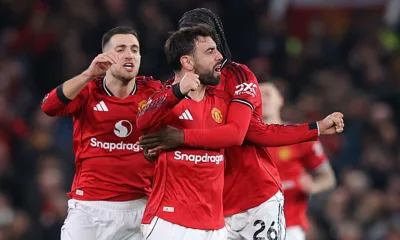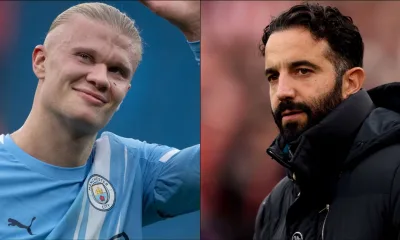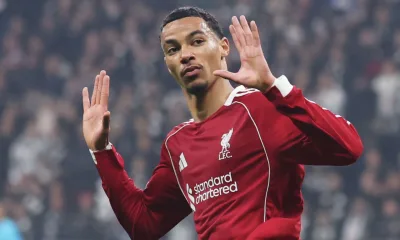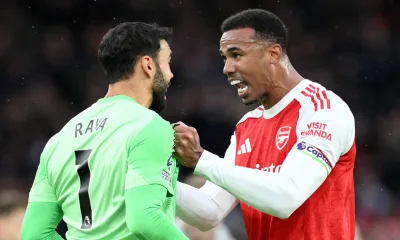Chelsea
Why the Premier League Confirmed a Yellow for Bentancur After Reece James Tackle
Premier League: VAR confirmed yellow for Bentancur after studs into Reece James’s ankle; debate via

Tottenham Hotspur midfielder Rodrigo Bentancur was shown a yellow card after a late challenge that left Chelsea full back Reece James with studs in his ankle during a heated Premier League derby.
James was first to a loose ball but received a full set of studs into his ankle for his troubles. On-pitch referee Jarred Gillett, who was taking charge of this infamously feisty fixture for the first time, gave himself some thinking time. After an exchange of views with the VAR in Stockley Park, Gillett brandished a yellow, rather than red, card. Much to James’s evident fury, his Chelsea teammate Trevoh Chalobah was also booked for arguing with the referee.
During the half-time interval the Premier League’s official match centre explained that: “The referee’s call of yellow card to Bentancur was checked and confirmed by VAR—with the contact deemed to be a reckless challenge and not serious foul play.”
Law 12 in the FA Handbook details the subtle differences in its definition of “reckless” challenges and “serious foul play.” That distinction underpinned the match officials’ decision to leave Bentancur on the field.
Sky Sports pundit Jamie Carragher was quick to dismiss the incident. The former Liverpool defender, no stranger to a forceful lunge of his own back in his playing days, argued that Bentancur didn’t make contact high enough up James’s shin to warrant a red card.
The verdict did not settle opinion among supporters. Social media reaction was sharply divided, with some users questioning Bentancur’s decision-making and others angry that the tackle did not merit a sending-off:
“Sometimes I genuinely do not understand the thought process behind some of Bentancur’s actions.”
“How is Bentancur not sent off? I get its a derby, but those challanges should be red regardless imo”
The confirmation from VAR that the challenge was reckless rather than serious foul play resolved the formal outcome, but it ensured the incident remained a contentious talking point after the match.
Chelsea
Chelsea lodge opening bid for Saint-Étienne forward as contract row continues
Chelsea have opened talks for Saint-Étienne striker Djylian N’Guessan amid a contract standoff. Jan

Chelsea have submitted an initial proposal for Saint-Étienne forward Djylian N’Guessan as the French side move to sell amid a contract dispute. N’Guessan, who was expected to be a regular starter in Ligue 2 this season, has made only one appearance while negotiations over his future continue. He is out of contract in 2027 and, according to L’Équipe, is refusing to sign an extension.
Saint-Étienne have made the player available in order to avoid losing him for free. The report states Chelsea’s opening approach was for a deal worth €8 million (£7 million, $9.4 million). That offer was rejected, with the French club said to be holding out for closer to €12.5 million. It is not yet clear whether Chelsea will return with an improved bid. Arsenal and Brentford are also named admirers, and Saint-Étienne are understood to hope of provoking a Premier League bidding contest.
Chelsea’s owners, BlueCo, who also own Strasbourg, have signalled a willingness to invest in young prospects. That transfer policy has not always satisfied the full fanbase.
A wider concern at Chelsea has been the perceived lack of experience in Enzo Maresca’s squad. With Raheem Sterling exiled, the oldest regular in the group is 28-year-old centre back Tosin Adarabioyo, who is one of only seven squad members above 25.
Former captain John Terry has publicly urged Chelsea to add experience in January by reuniting with Thiago Silva. First reported by Globo Esporte, Silva is said to be seeking a winter move away from Fluminense to return to Europe; his family remained in London after his 2024 departure and his sons, Isago and Iago, are in the Blues’ academy. Terry said on TikTok:
“Thiago Silva is available,” Terry highlighted on TikTok. “Now, listen to me, a man with great experience, a man with a great relationship with our football club.
“His two kids are in our academy, no doubt he’s going to be back in London over here with his family for Christmas. I would love to see this man back at our football club playing alongside these players.
“Now, I’m not saying he has to play every week, but just the experience he can bring, playing alongside someone like that … Probably goes back to my role under Antonio Conte in 2017 when we won the league.
“I didn’t play, but I had a role to play within the group, be that buffer between the players, the manager, the owners, and have that bit of experience where, sometimes, when you’re going through a tough spell or when you’re going through a good spell as well, you know what to say, what to deliver, and he certainly brings that as well.
“So, Thiago Silva back to Chelsea, that would make everyone very, very happy, me included in that, so who knows? I’m just throwing it out there. Thiago, we love you.”
Silva enjoyed four years at Chelsea, making 155 appearances and lifting the Champions League trophy in 2021.
Chelsea
Maresca rejects Manchester City links and reaffirms commitment to Chelsea
Maresca dismissed Manchester City speculation reaffirmed Chelsea commitment and contract until 2029.
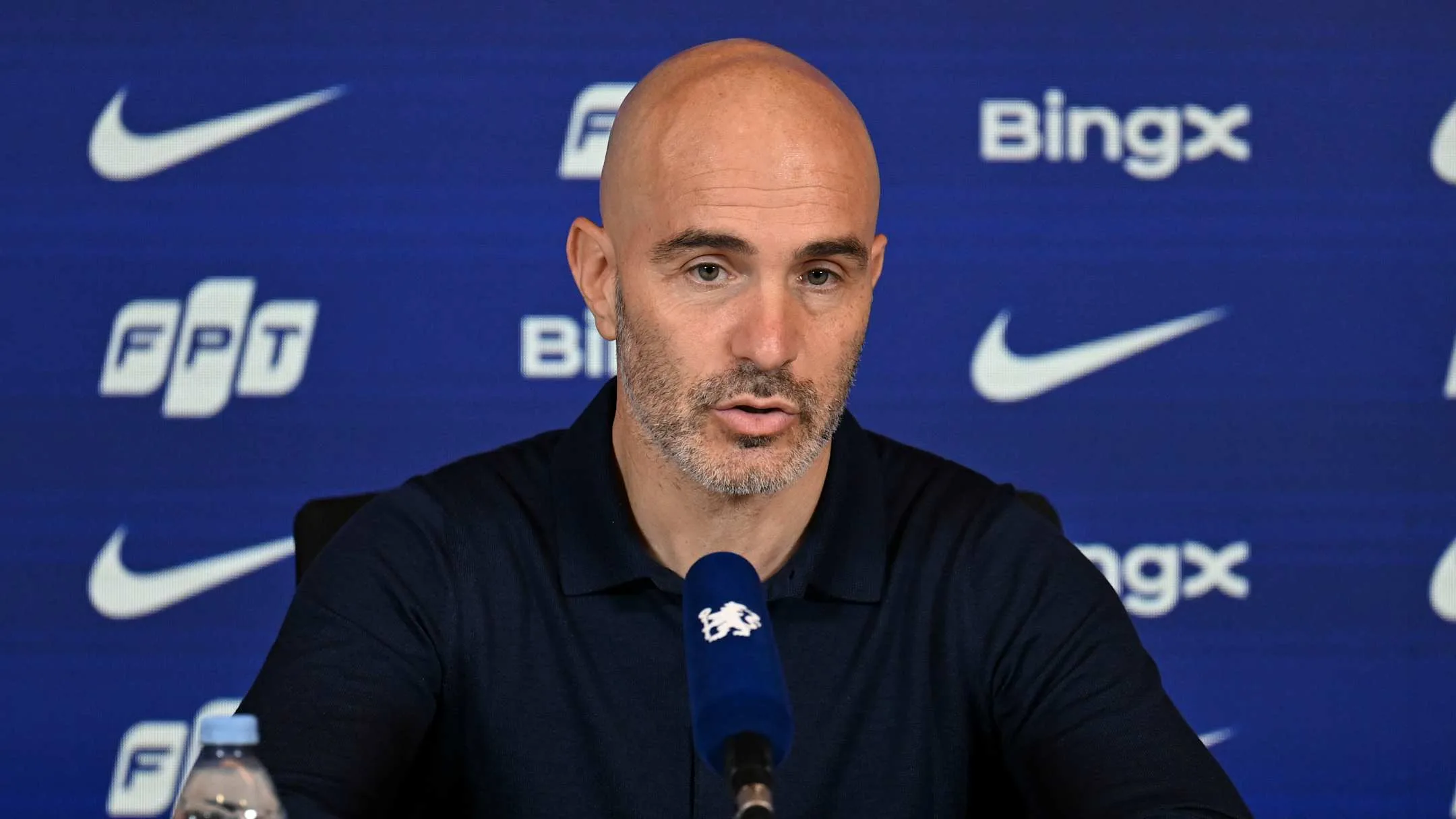
Enzo Maresca moved to close down speculation about a move to Manchester City, stressing that his attention remains with Chelsea and the immediate challenges the team faces.
Asked directly about reports linking him to Pep Guardiola’s former post, Maresca was dismissive. “It doesn’t affect me at all because I know that is 100% speculation,” he stressed. “And in this moment, there is no time for these kind of things.
“First of all, because I have a contract here until 2029 probably. And my focus, I said many times, is just about this club and I’m very proud to be here. But again, it’s speculation. One week ago I was in Italy, the same with Juventus. So I don’t pay attention because I know that is not true.
“Again, I think it’s just a speculation. Now, it’s important to understand the reason why this news was there. But it’s not my job, I don’t care at all. But again, it’s just a speculation. And I think the players, they are focused on a Newcastle game that is a very important game and very difficult.”
When pressed on whether he will still be in charge next season, Maresca gave a concise reply: “Absolutely, yes,” he promised.
He reiterated contractual security and concentration on his role. “Again, I have a contract until 2029, and this is speculation, 100%. So I don’t have nothing to add, because again, I don’t pay attention. And if we continue to talk about that, that means that I’m paying attention to that. But I’m not focused on that. I’m just focused on the Newcastle game. I’m focused on my job.
“Again, I signed a contract last year until 2029. I’m happy with that, and no more than that.”
The interview also touched on Maresca’s relationship with those above him. He acknowledged ongoing communication but said they had not discussed his earlier, sharper remarks. “We are in the same building, so we speak about different things,” he explained. “But about the Everton press conference, no.
“Absolutely [the relationship is fine].”
Maresca closed by asking supporters to maintain their backing after the crowd sang his name following the 3–1 win over Cardiff City. “Just to continue to support the team in the way they have done since I joined the club and also in the past,” he said. “And trust the process from the team, from the club, from everyone.”
Chelsea
Enzo Maresca Raised as a Serious Candidate to Replace Pep Guardiola
Manchester City are reported to consider Enzo Maresca among leading options to replace Guardiola….
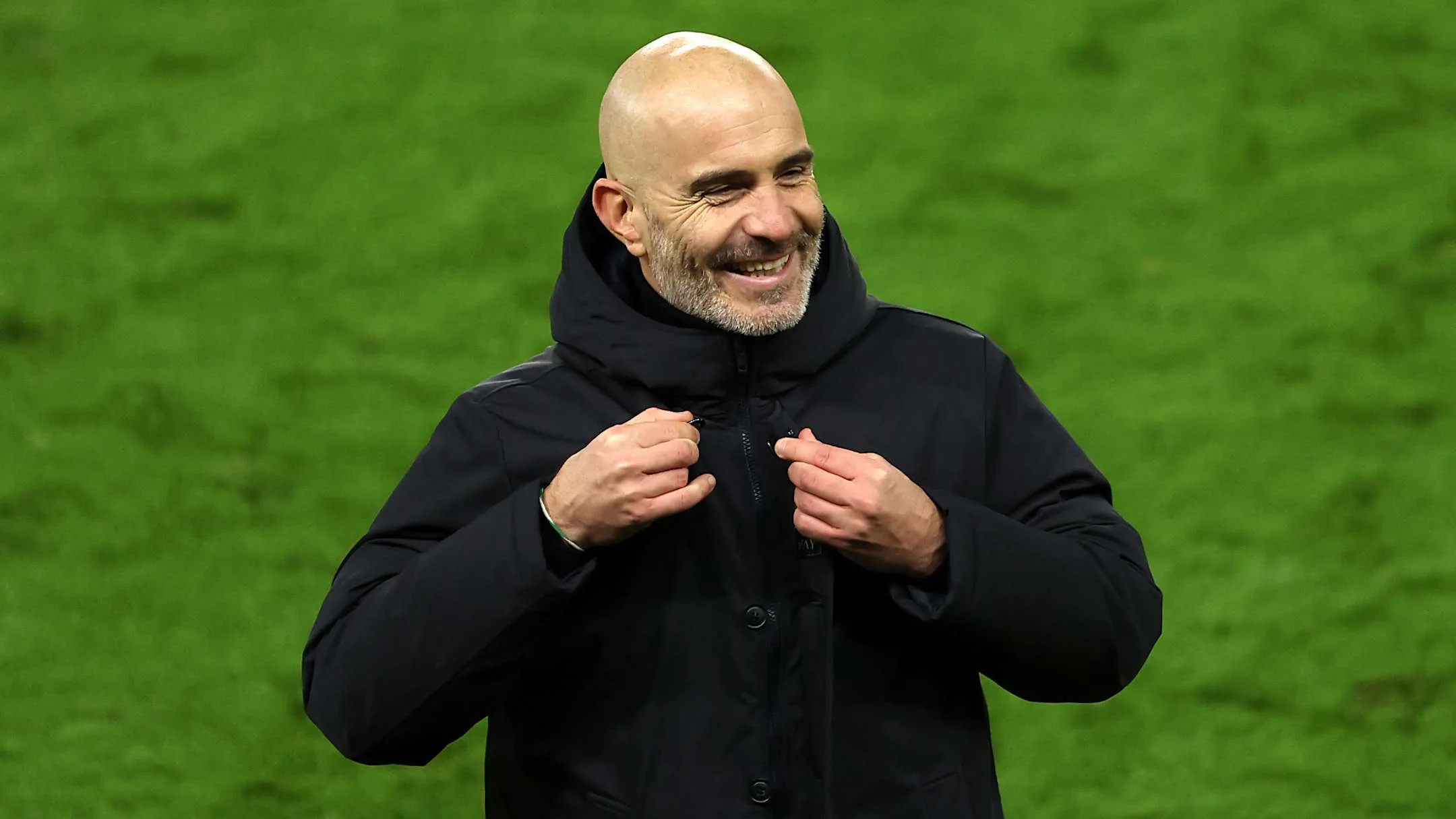
Reports suggest Chelsea manager Enzo Maresca has entered Manchester City’s succession conversation as a potential replacement for Pep Guardiola. Per The Athletic, the Chelsea boss is described as “high among the candidates” Manchester City are considering to fill the gap Guardiola will leave at the Etihad when he eventually steps down.
Guardiola lauded Maresca earlier this season, calling him “one of the best managers in the world.” That public praise has fed speculation that the current Chelsea coach could be viewed internally as a viable long-term option for City.
Despite signing an extension that runs until the summer of 2027, there is “a growing anticipation” that Guardiola could call it quits at the end of the current campaign. This season marks Guardiola’s 10th at Manchester City; he previously managed four years in Catalonia and three at Bayern Munich, doubling his longest spell at a single club.
Guardiola explained how he felt compelled to continue at City in November 2024 to help steer the club out of a dire run of form. The decline accelerated in the short term before he oversaw a third-place finish, two points above Maresca’s Chelsea, and a run to the FA Cup final. Reports add that any final decision on Guardiola’s future is likely to be delayed until the end of the campaign, consistent with the coach’s history of operating on one-year rolling contracts.
The timing of the story coincides with a challenging period for Maresca at Stamford Bridge. The Italian admitted to experiencing the “worst 48 hours” of his Chelsea tenure after perceived signals of a lack of faith from unnamed parties. Contact with the club’s co-sporting directors and owners has been described as limited, leaving his immediate future uncertain.
Chelsea have Maresca under contract until 2029, and that deal includes a one-year extension clause. While Maresca’s Chelsea agreement is lengthy, the reports note that appetite to continue is not guaranteed on either side as the season progresses.


